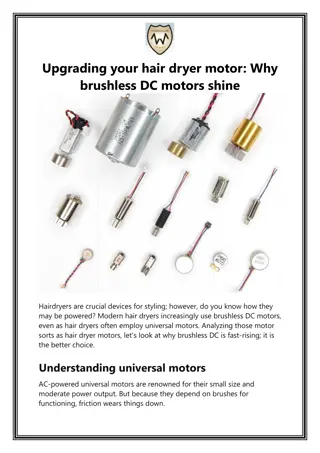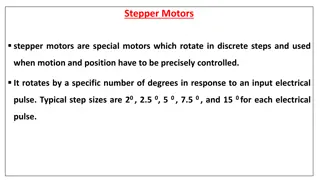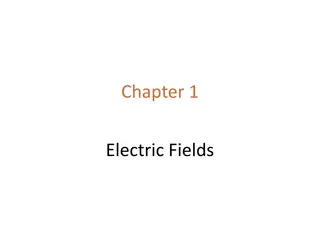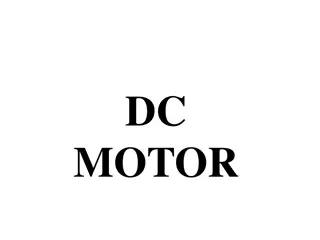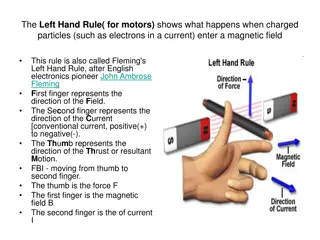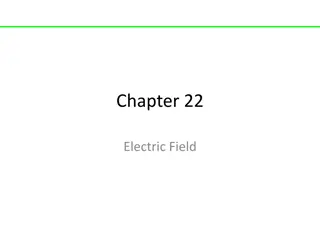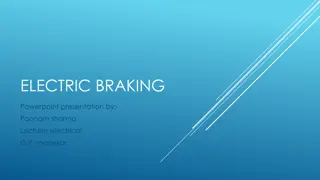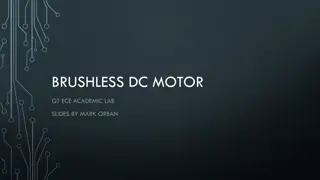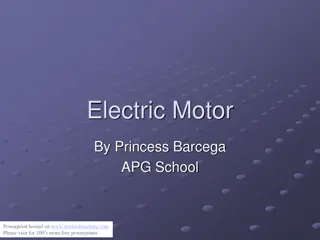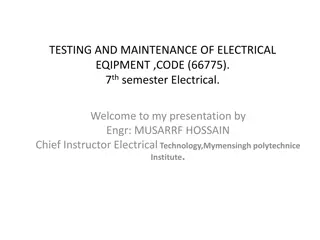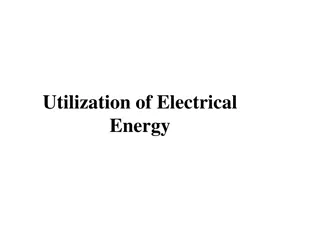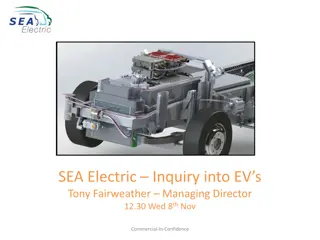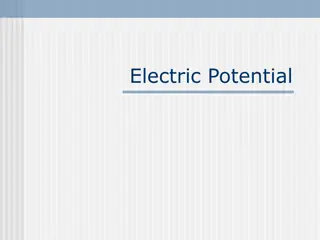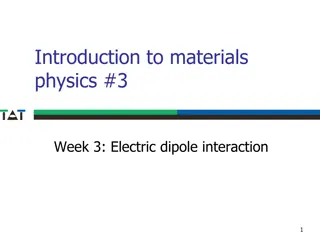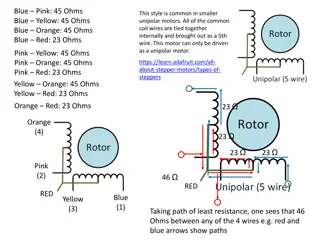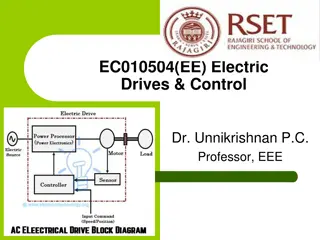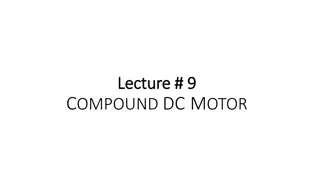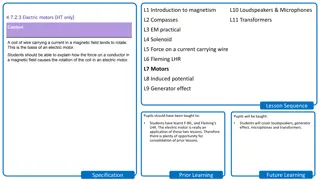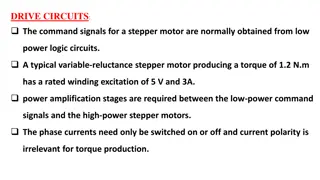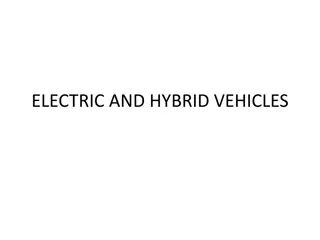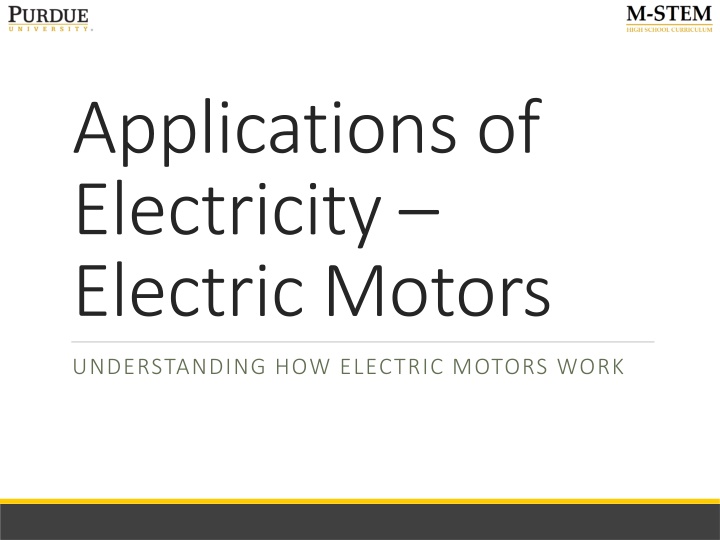
Electric Motors and Magnetism in Applications of Electricity
Explore the fundamentals of electric motors and magnetism, from permanent magnets to electromagnets, and how they work together in applications of electricity. Understand the principles behind electromagnetic force and the role of motors in converting electrical energy to mechanical motion.
Download Presentation

Please find below an Image/Link to download the presentation.
The content on the website is provided AS IS for your information and personal use only. It may not be sold, licensed, or shared on other websites without obtaining consent from the author. If you encounter any issues during the download, it is possible that the publisher has removed the file from their server.
You are allowed to download the files provided on this website for personal or commercial use, subject to the condition that they are used lawfully. All files are the property of their respective owners.
The content on the website is provided AS IS for your information and personal use only. It may not be sold, licensed, or shared on other websites without obtaining consent from the author.
E N D
Presentation Transcript
Applications of Electricity Electric Motors UNDERSTANDING HOW ELECTRIC MOTORS WORK
Magnetism & Magnets A permanent magnet is a material that keeps its magnetic properties. If a material is magnetic, it exerts an attractive/repulsive force on magnets or other magnetic materials nearby. Whether the two magnets attract or repel depends on which poles face each other.
Magnetism & Magnets cont., A compass needle is a magnet that is free to spin. Because the needle aligns with the local magnetic field, a compass is a great way to see magnetic field lines.
Electromagnets Electromagnets are magnets that are created when there is electric current flowing in a wire. A simple electromagnet can be made by wrapping insulated wire around a piece of iron, such as a nail, and connecting it to a battery. By changing the amount of current, you can easily change the strength of an electromagnet or even turn its magnetism on and off.
Electromagnetic Force The direction of the force is always perpendicular to the direction of the current and magnetic field If current (?) is perpendicular to the magnetic field (?), then force acting of the length of wire exposed to the magnetic field can be obtained by ????= ? ? ?????
Motors An electric motor uses the rotational push (force) of a magnetic perpendicular magnetic field to turn a current-carrying wire loop. Direction of rotation is determined by the left-hand rule.
Motors cont., Permanent magnets and electromagnets work together to make electric motors and generators. The secret is in the ability of an electromagnet to attract/repel north and south poles of a permanent magnet.
Motor cont., A simple DC motor can be made with four parts: 1. A rotor with magnets with the same orientation. 2. Stationary magnet(s). 3. A commutator that switches the current off and on to keep the rotor spinning. 4. DC power supply
Motor cont., An electric motor that runs from batteries has the same three parts. The permanent magnets are on the outside, and the electromagnets turn in the rotor.
Electromagnetic Induction Electric generators transform mechanical energy into electrical energy. They transform mechanical energy into electrical energy. The process of using a moving magnet to create electric current is called electromagnetic induction.
Electromagnetic Induction cont., As long as the disk is spinning, there is a magnetic field through the wire coil inducing an electric current through the coil of wire.
Summary With the theory of conservation of energy, we know that the energy will not disappear. Rather, energy would change from one form to another. In our discussion today, we have seen electrical energy turn into mechanical energy and also from mechanical to electrical. Motors would help us to utilize the electrical energy that we have to do work through the form of mechanical energy. Generator does the opposite. It transforms mechanical energy into electrical energy. Generator is able to provide us with the source of electricity when we provide other forms of energy or materials that could react to release energy.

